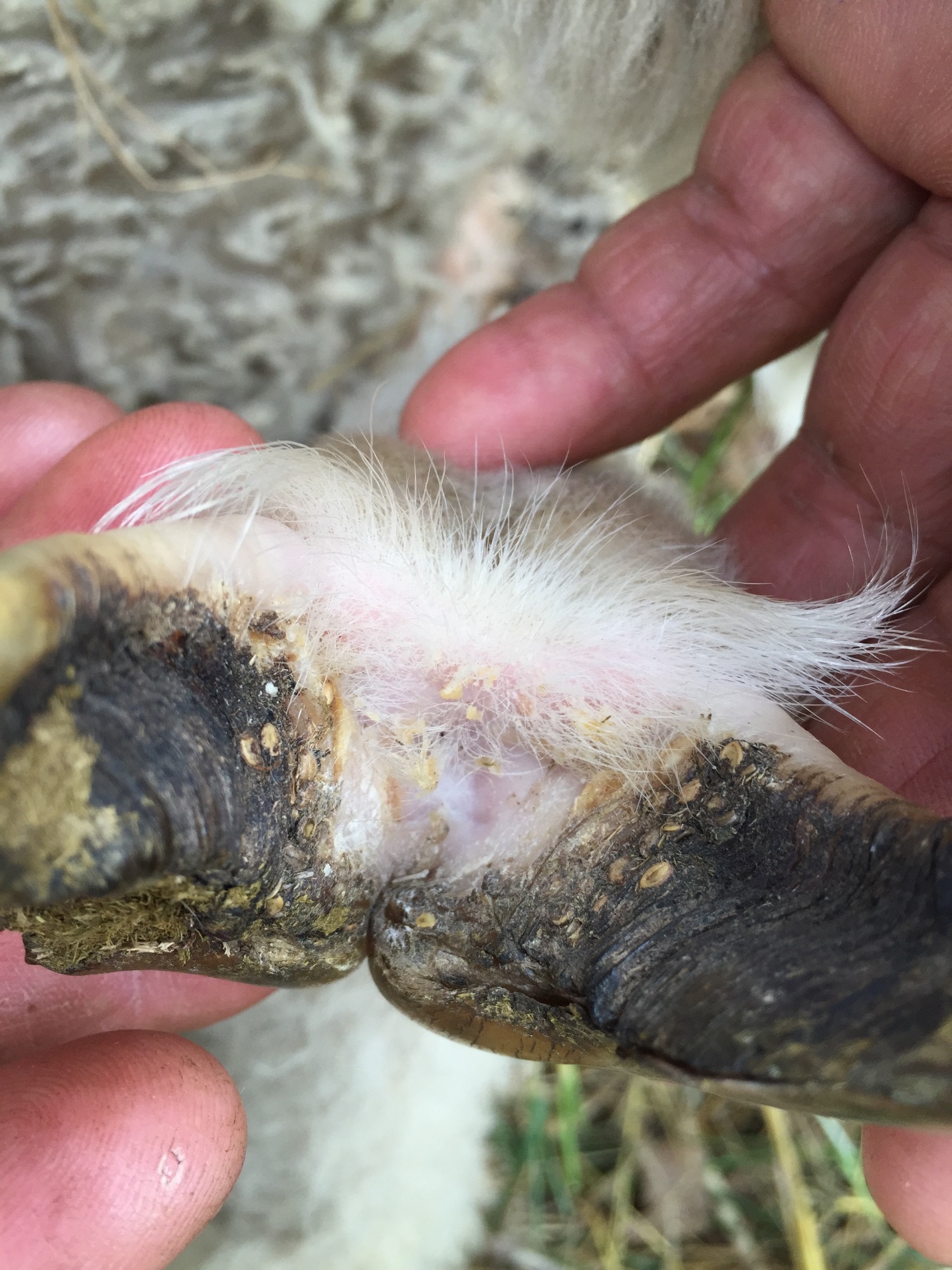Description: A necrotising inflammation of the interdigital skin which also involves part or all of the soft horn of the axial wall of the digit (Egerton and Roberts, 1971). Ridging of the axial wall of one or both digits may be apparent in persistent Score 2 lesions associated with benign or low-virulent strains of D. nodosus.

Figure 1. Score 2. Score 2 lesion with white necrotic tissue/exudate. An active lesion such as this would have a strong fetid odour. Photo: Andrew McPherson

Figure 2. Score 2. Score 2 lesion with a moist, white necrotic exudate. An active lesion such as this would have a strong, fetid odour. Note slight ridging of the axial wall of each digit. Photo: Andrew McPherson

Figure 3. Score 2. Early Score 2 lesion with some hair still present on the interdigital skin and little necrotic exudate. Photo: Karen Smith

Figure 4. Score 2. This Score 2 lesion has begun to regress (drying out). Photo: Karen Smith

Figure 5. Score 2. Lesion with dry necrotic exudate and ridging of the axial wall of each digit. There is evidence of previous underrunning on both digits. The underrun pockets of healed lesions can harbour viable D. nodosus, as they provide a suitable anaerobic environment. This can lead to future breakdowns following the arrival of warm, moist environmental conditions. Photo: Andrew McPherson.

Figure 6. Score 2. Interdigital lesion with blow fly larvae (flystrike). Note the overgrown, misshapen hoof of the right digit, which suggests a long standing problem. Photo: Andrew McPherson

Figure 7. Score 2. Chronic interdigital lesion with flystrike and granulation tissue. Photo: Andrew McPherson

Figure 8. Score 2. Interdigital lesion with mild exudate. Photo: Richard Whittington
Go back to: Introduction to foot scores